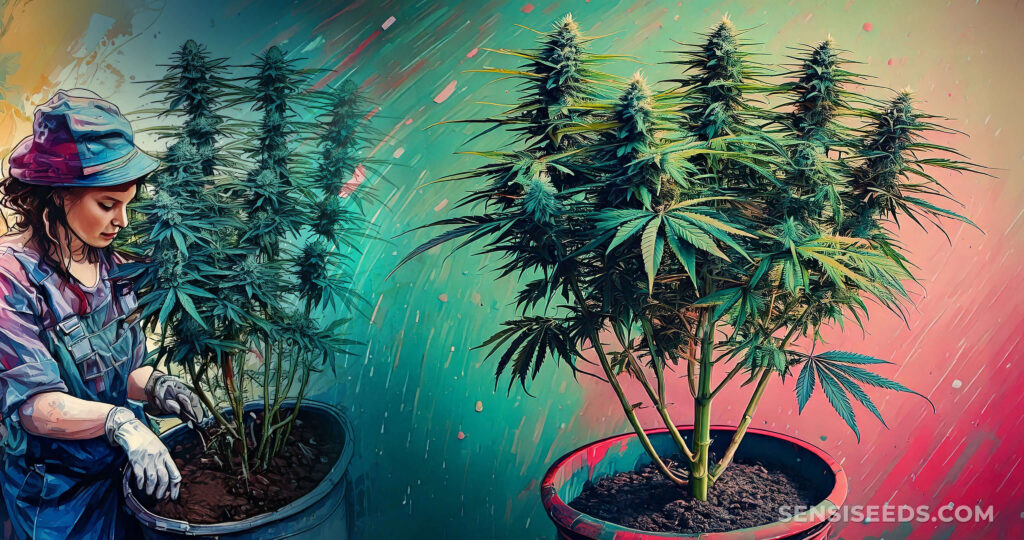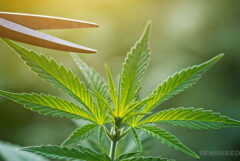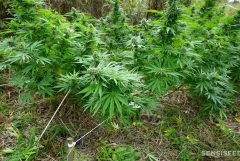We all want to get the most out of our cannabis plants and lollipopping is one of the simplest and most reliable methods for increasing the quantity and quality of your harvest. While we’re all hesitant to remove growth from a healthy weed plant, properly trimming away the lowest leaves helps your plant focus on the more productive areas.
What is lollipopping?
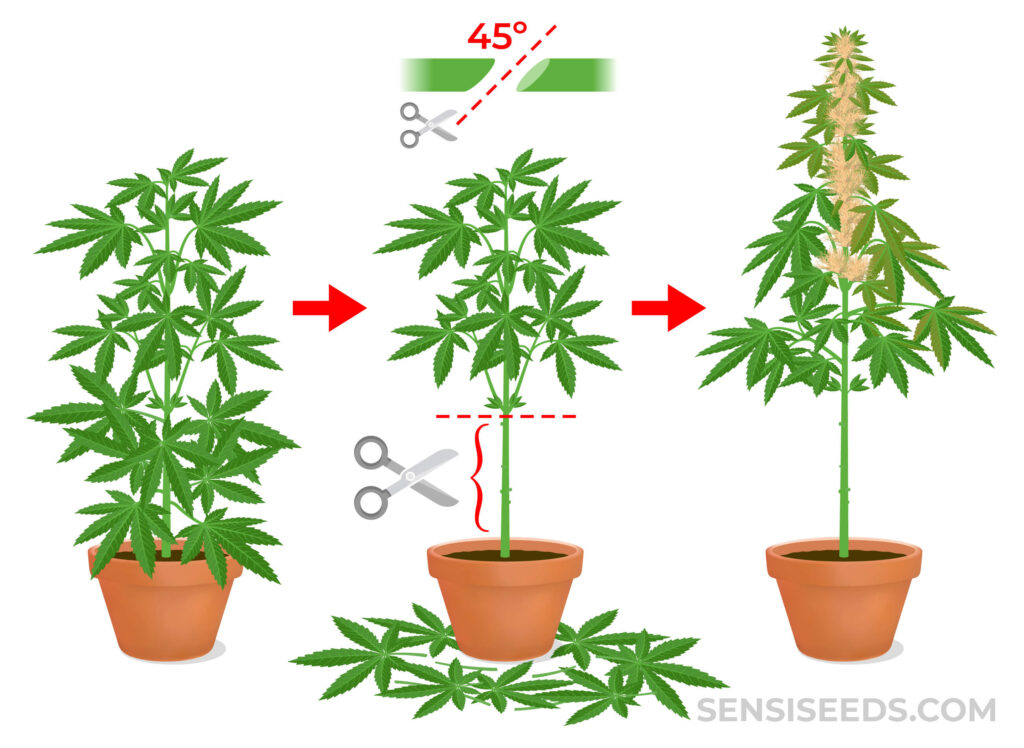
Lollipopping is one of the fastest, easiest, and most rewarding ways of trimming a cannabis plant. As you might have gathered from the name, lollipopping is the art of removing the lower leaves (and, in extreme cases, entire branches) from a plant to prioritise the development of a single massive cola at the top of each branch. The result is a plant with long skinny stalks supporting large clusters of flowers at the top—much like a lollipop.
Lollipopping vs defoliation
Defoliation is an incredibly broad catch-all term for any practice which removes leaves from a plant. Defoliation can be done to remove dead or unproductive vegetation but also plays a key role in optimising airflow, light penetration, and overall plant health. Lollipopping is a specific type of defoliation that limits the number of individual grow sites to force each branch of a plant to produce only a single cola.
Why should I lollipop my cannabis plants?
If you just let a seed grow without any intervention, it will most likely grow into something of a Christmas tree shape—narrow on the tip and wider on the bottom. A plant’s lowest branches will often be the longest and can each have potentially a dozen flowering sites which will all produce viable weed. However, the lowest buds from these branches are often leafy, stemmy popcorn nugs which many growers dread.
To make matters worse, these small lower buds actively detract from the size and quality of your plants’ precious colas. Even the largest plant can only produce a finite quantity of cannabis based on a range of factors including size, genetics, and environment so a plant with fewer flowering sites can put all of its resources into those without wasting energy on smaller buds.
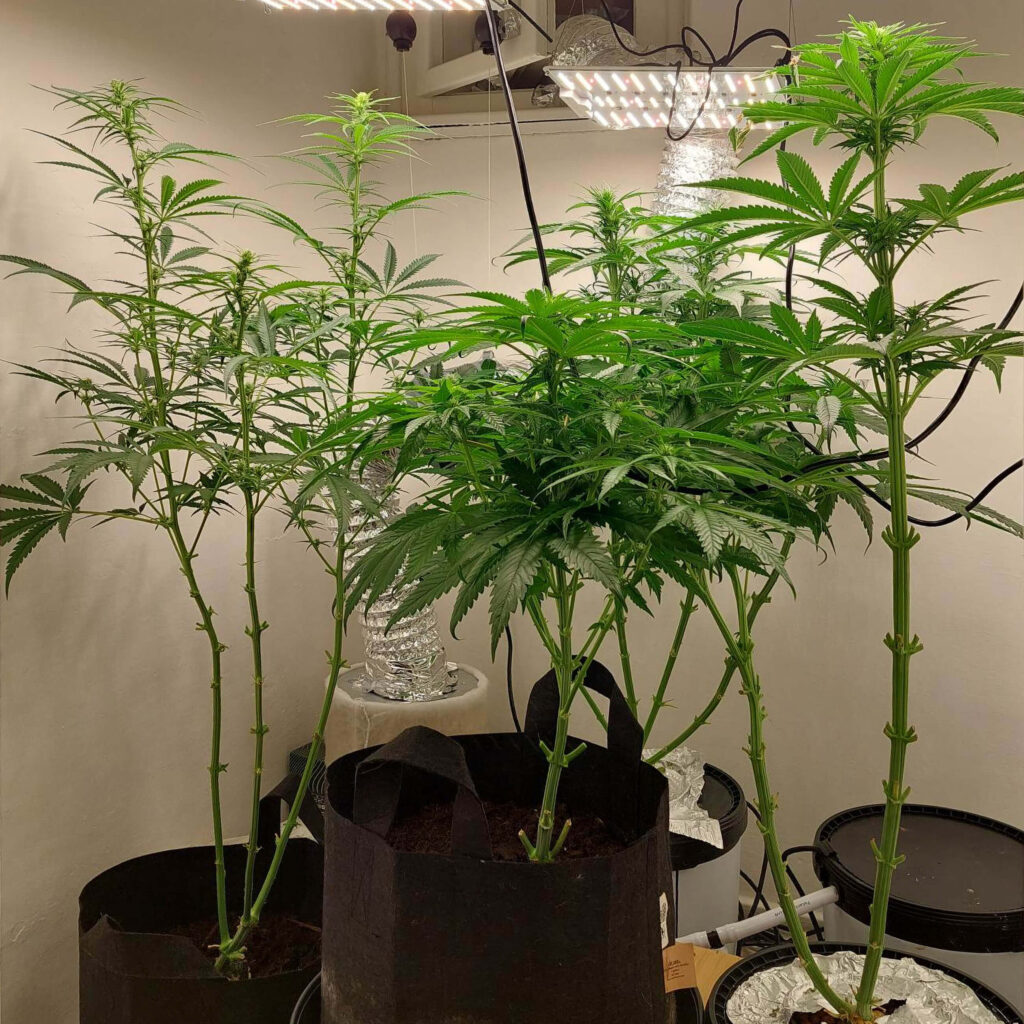
Lastly, lollipopping is an easy way to maximise airflow around the soil and bottom of your plant. Stagnant, humid air is a breeding ground for mould or fungi which can rapidly derail even the healthiest plants.
Lollipopping for indoor growing
If you’re growing inside, then lollipopping is a technique that you should heavily consider. The vast majority of indoor growers use a fixed light, meaning that their plants are only receiving light from one angle which means that only the top of the plant will be truly productive.
Most LED grow lights can penetrate through three to five layers of vegetation. This means that most growth below the canopy will receive less-than-optimal lighting and will serve as little more than a drain on your plant’s precious resources. While it is possible to partially offset this with supplemental lighting, the additional costs rarely offset the increased yield.
Lollipopping for outdoor growing
If you’re growing your plants outdoors, then lollipopping is likely less necessary. Since the sun moves throughout the day, your plants will receive adequate light from a wide range of angles allowing the entire plant to produce hefty buds. While trimming an outdoor plant is still a must, it’s more about plant health and airflow than increasing yield.
When to lollipop cannabis plants
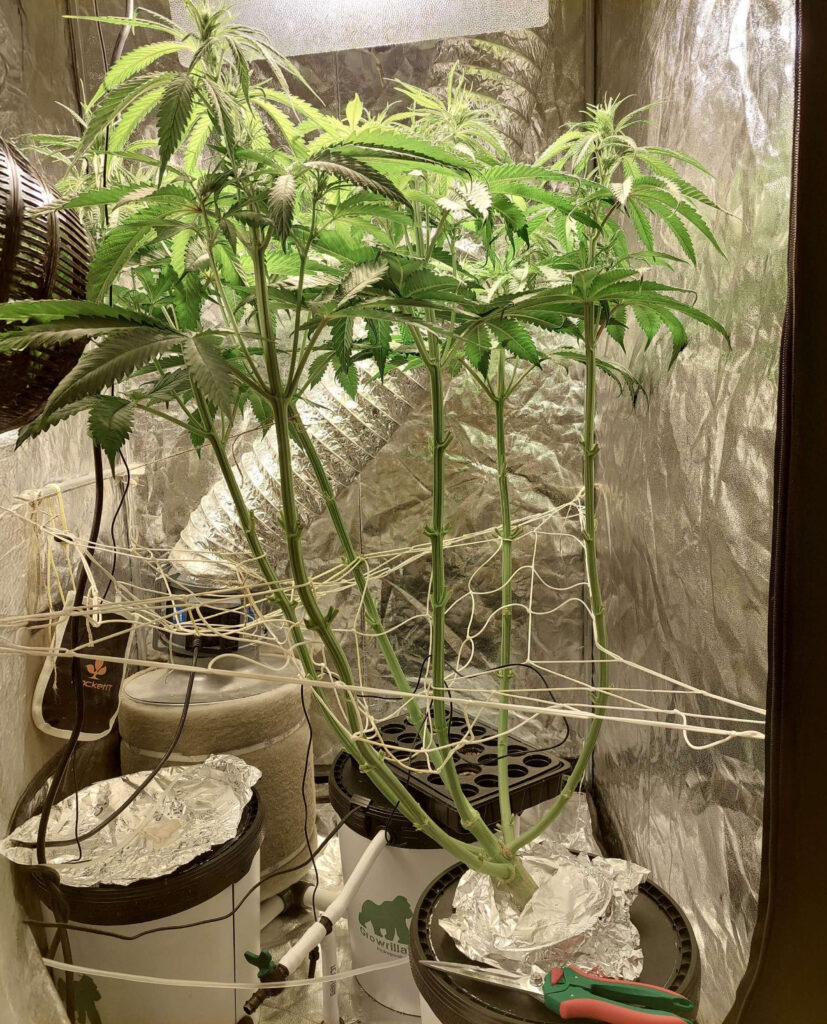
The ideal time to lollipop weed plants is just after the switch to flowering. Once you switch your plants to flowering, they will undergo a few weeks of rapid vertical growth known as “stretch”. This period typically lasts two to three weeks and is when cannabis plants do most of their growing. This period of stretch is the best window for lollipopping.
Starting before this time will mean that you’ll just have to do it all again as your plant rapidly develops new growth. Starting much later, though, causes heavy stress on a plant which can lead to a greatly reduced harvest.
Remember, the main goal here is to create an ideal number of flowering sites and waiting a few weeks after flowering will help you determine the best course of action.
Can I lollipop autoflowers?
Unlike the majority of high-stress training (HST) techniques out there, lollipopping doesn’t significantly slow down your plant’s growth; as such, it can be used on autoflowering plants. If you’re growing an autoflower and it’s getting to the point where the lower leaves aren’t receiving enough light, then yes, lollipopping might just be your best bet.
I should point out that lollipopping does cause stress to a plant and any heavy defoliation comes with the risk of slowed growth. For photoperiod strains, this isn’t an issue but for autoflowering plants, every day counts. The best advice I can give is to try it out side-by-side with an untrimmed plant and see if the difference matters to you.
How to lollipop cannabis plants
Now that we’ve got all of the basic information out of the way, it’s time to get down to business. Lollipopping is about as easy as it gets when it comes to HST and all you need is a bit of planning and a good set of sharp scissors.
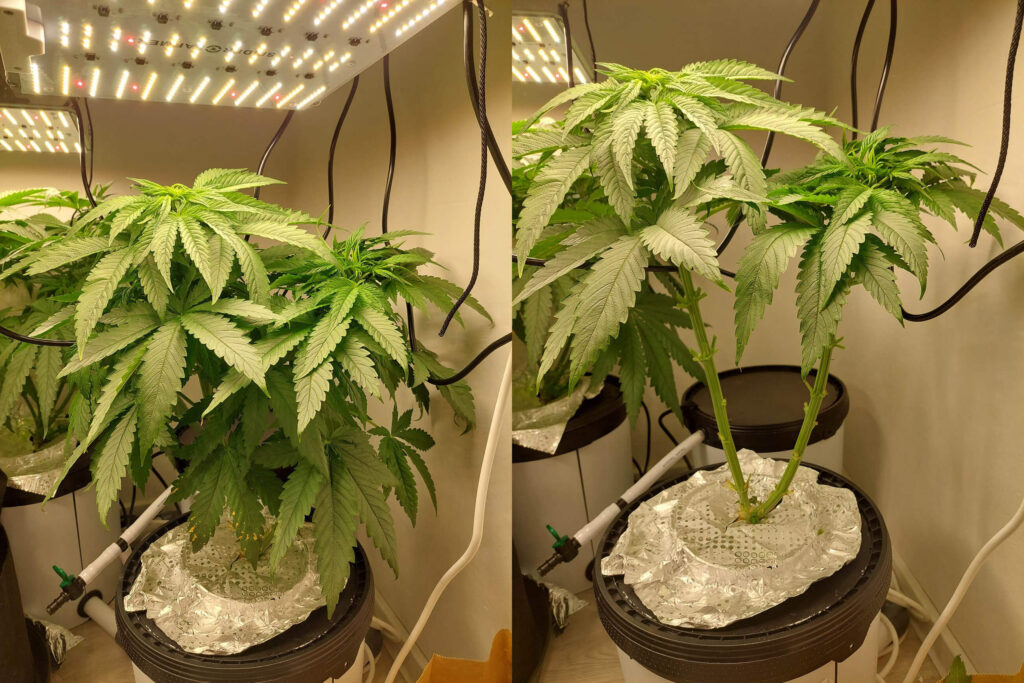
Step 1: Make a game plan
As the saying goes, “measure twice, cut once”. Don’t just go in like the villain in a bad slasher flick slicing off anything you don’t like the look of. You’ll need to make a detailed game plan and stick with it to ensure the best results.
How many nodes to leave when lollipopping?
The answer here varies based on things like the intensity and power of your light, what other growing techniques you may be using, and a plant’s genetics. Typically, it’s ideal to leave anywhere from three to six inner nodes at the top of each branch and to remove anything below that line.
Step 2: Trim the leaves
It’s important to mention that lollipopping does not require the removal of entire branches, only leaves and buds. Now, sometimes a plant’s lowest branches simply won’t reach up to the canopy and in these extreme cases, it may be worth cutting these away, but it is very much the exception as opposed to the rule.
Starting at the bottom of the plant, remove any leaves that are below the line you chose in step one, making sure to cut as close to the stem as possible without damaging it. If this is your first time (or even your hundredth, if I’m being honest), you may find yourself thinking that you’re removing more foliage than necessary. Ignore that and trust the process.
Step 3: Remove unwanted buds
This step may or may not be necessary depending on exactly when you choose to lollipop. If you’re already a few weeks into flowering, you may already be seeing the first signs of flowers growing along the branches’ inner nodes. If so, then these will each need to be trimmed away. Once again, try to cut them off as close to the stem as you can.
And that’s it, you’re all done. Unlike things like low-stress training, lollipopping is a one-and-done kind of thing. If you timed it right, your plants should start flowering any day now.
Mixing lollipopping with other growing techniques
Lollipopping is incredibly versatile and partners brilliantly with several other advanced growing techniques. Practices like mainlining and screen of green growing are all about sacrificing vertical growth for a wider canopy and lollipopping is almost a must for optimal results. With the help of low-stress training (LST), it’s possible to create a massive, uniform canopy to get the most out of your plants.
One sweet trick
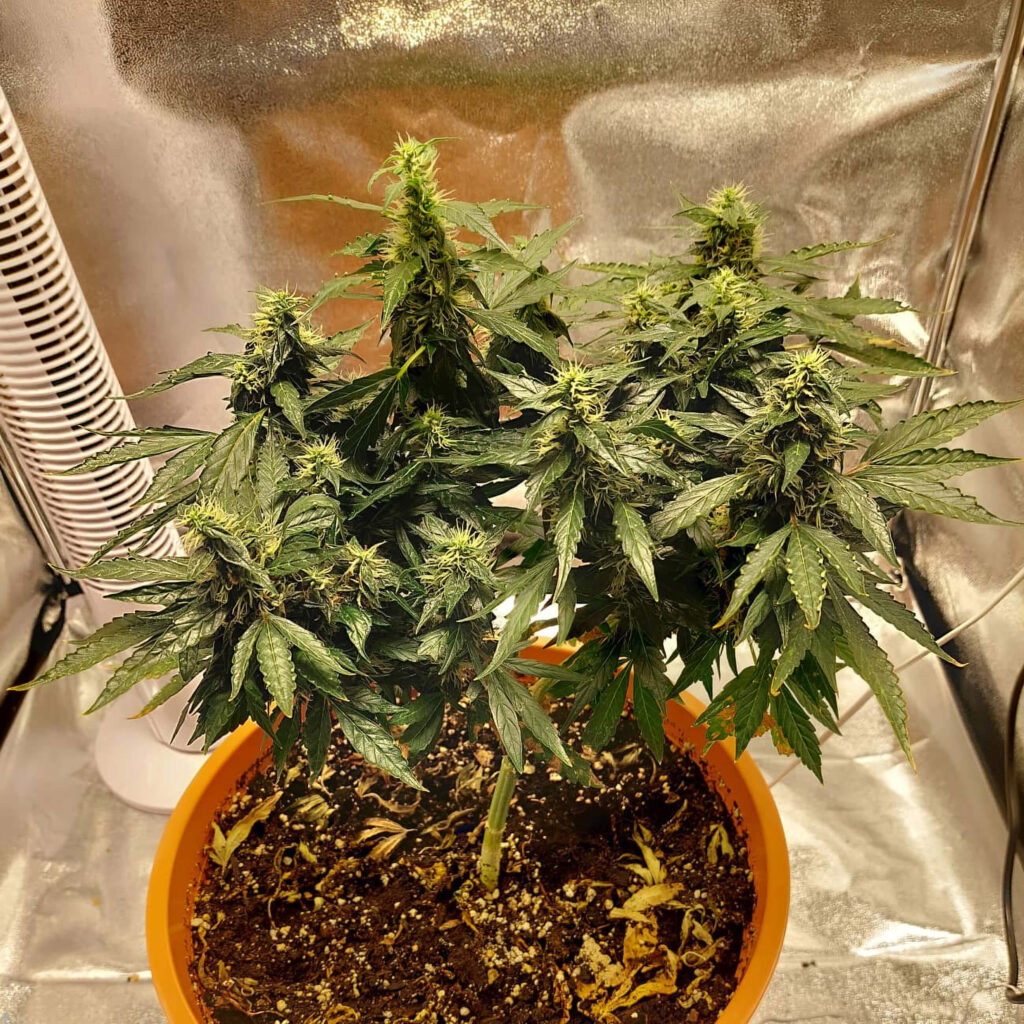
Lollipopping might be a little counter-intuitive at first, but removing unproductive growth from a plant is a time-tested technique for boosting yields. Thanks to its versatility and ease, this is one of the fastest, simplest, and most reliable methods for any grower looking to get just a little bit more weed out of their plant.
- Disclaimer:Laws and regulations regarding cannabis cultivation differ from country to country. Sensi Seeds therefore strongly advises you to check your local laws and regulations. Do not act in conflict with the law.






